-
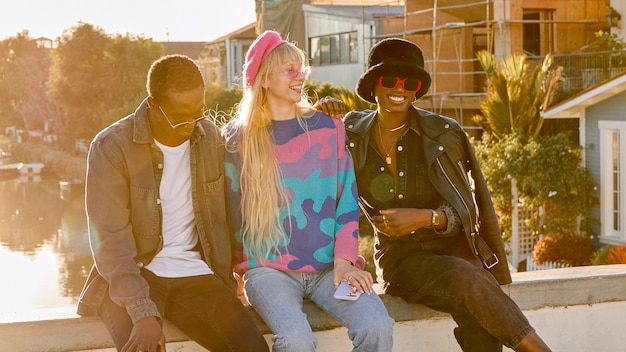 Indie Style Fashion for Clothing Brands: A Comprehensive Guide
Indie Style Fashion for Clothing Brands: A Comprehensive GuideIn a world where fashion trends often follow the same beaten path, indie style fashion offers brands a unique opportunity to set themselves apart. By embracing creativity, individuality, and authenticity, indie fashion allows brands to express a distinct identity, free from the constraints of mass-market trends. This blog will explore what indie style fashion is, how it’s evolved, and why it’s a valuable tool for any brand looking to carve out a unique space in the market.
What Is Indie Style Fashion?
Indie fashion is about embracing individuality, creativity, and a rejection of the mainstream. It’s a style that values handcrafted pieces, vintage finds, and unconventional pairings. Indie fashion at its core allows people to express themselves in terms of what they wear.
Historical Background
The roots of indie style are traced to the 1980s and 1990s when grunge and punk music culture was emerging. Bands like Nirvana and Pearl Jam set the fashion trend to be raw, rugged, and DIY-inspired. It was a reaction to high street fashion, which was concerned with individuality and comfort.
The late 1990s and early 2000s were a watershed moment, with the internet enabling indie fashion to break out of its niche roots. Blogs and websites enabled fashion enthusiasts to showcase their unique, frequently DIY, ensembles, building a culture that celebrated individuality and self-expression.
Key Features
Indie fashion blends elements of vintage, bohemian, grunge, and normcore styles, creating a look that’s eclectic, personal, and creative. It encourages individuals to experiment and mix different styles and time periods to create a look that feels authentic to them.
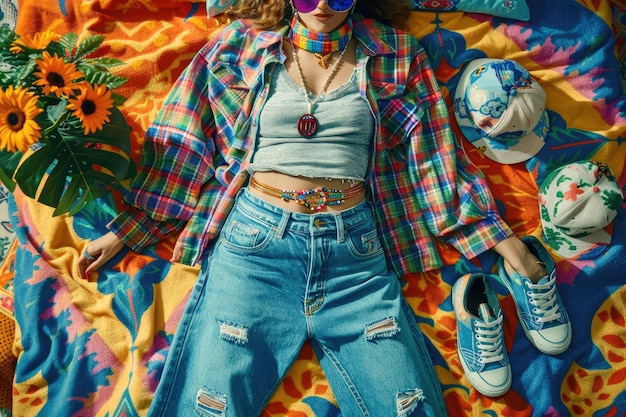
The Indie Aesthetic: What Makes It Unique?
The indie aesthetic doesn't stop at fashion—it's a lifestyle, an attitude, and a statement. It's about embracing individuality and creative expression, leaning towards non-glamorous mainstream fashion that refuses to conform.
Indie Sleaze vs. Indie Aesthetic
The most common misconception is that Indie Sleaze and Indie Aesthetic are the same, but they represent two sides of indie fashion.
· Indie Sleaze, a style that peaked in the late 2000s, embraces a more chaotic, rebellious look—think mismatched clothes and messy, vintage-inspired outfits. It’s about rejecting polish in favour of a raw, undone vibe.
· The Indie Aesthetic, by contrast, leans more towards artistic self-expression and originality. It embraces bold patterns, oversized clothing, and an air of effortless cool. It's about using fashion to showcase personal creativity.
Trends Within Indie Aesthetic
The indie style constantly evolves, but there are things that remain the same. The look is dependent on the idea of mixing prints, embracing imperfections, and borrowing inspiration from a variety of cultural influences. From boho trends to punk-influenced looks, indie style is about creating something fresh and bold.
What Are the Latest Trends in Indie Fashion?
The indie fashion world is vibrant, constantly evolving with fresh ideas and a focus on individuality. Some of the key trends that define the current scene are:
Vintage Revival
Indie fashion has never been far from the past, and vintage dress is one of the biggest trends. From vintage prints to classic shapes, the clothing is nostalgic yet still fresh and contemporary.
Sustainable Fashion
As consumers and increasingly brands become aware of the green trail of fast fashion, sustainable fashion is gaining popularity in the indie market. Indie brands are more concerned with ethical production and eco-friendly materials, which makes sustainability a core aspect of their business model.
Mixing Prints
In indie fashion, anything goes—especially mixing prints and patterns. Indie fashion rejects conventional "fashion rules" of styling, encouraging blending of multiple prints, textures, and colors to create one-of-a-kind outfits.
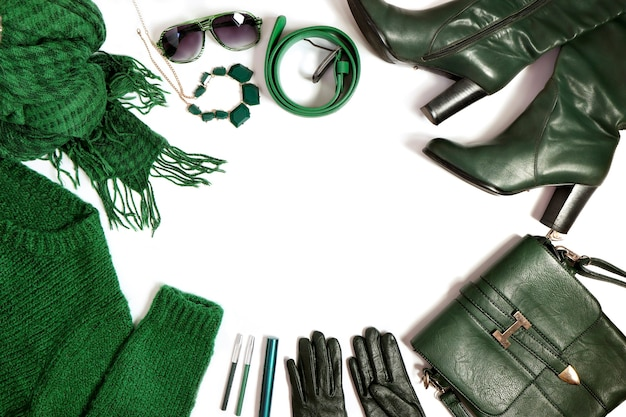
Accessories and Footwear in Indie Fashion
Footwear and accessories are the final touches that complete an indie outfit. Not only are they practical but also a means to express one's personal style.
Statement Jewelry
Indie fashion encourages bold choices, and statement jewelry is a perfect example. Chunky rings, oversized earrings, and quirky necklaces all contribute to an eclectic, distinctive style. These accessories are often conversation starters and add personality to any outfit.
Vintage Bags
A vintage-inspired bag is a staple of indie fashion. Whether it's a retro crossbody bag, a tote with beading, or a fringed clutch, bags are often chosen for their uniqueness and personal flair.
Footwear
Ankle boots are universal and perfect for wearing with skirts, jeans, or dresses. To remain faithful to the indie aesthetic, search for boots that have distinctive elements, like embroidery, studs, or thick heels. For a retro look, platform sandals or vintage sneakers are perfect to incorporate a 70s or 80s flair.
How to Start an Indie Clothing Brand
Starting an indie fashion line can be an exciting experience. It allows you to tap into your creativity and offer something unique to the fashion world. There are, however, a series of critical steps to undertake in order to succeed.
Identifying Your Niche
The first thing is to determine what is special about your brand. Do you wish to specialize in sustainable fashion, vintage style, or a particular cultural look? Your niche will differentiate you from the saturated fashion industry.
Building Your Brand Identity
Your brand identity should also represent your values and what you believe in. Whether it is sustainability, creativity, or individuality, your brand should clearly convey this through your apparel, messaging, and marketing.
Creating Your Collection
Begin small and concentrate on building a cohesive collection that resonates with your vision. Consider the message you wish to convey with your apparel and how each item can add to that message.
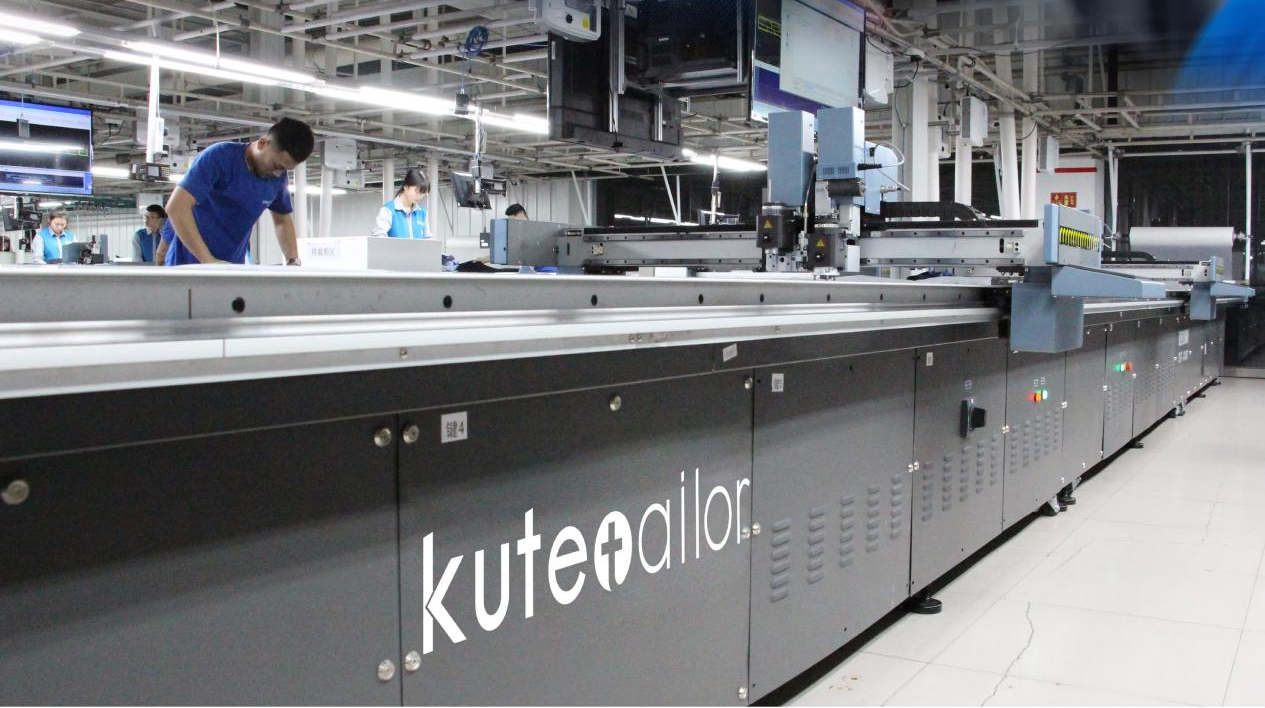
How Much Does It Cost to Start a Fashion Line?
Initial Costs
It comes with a number of costs, including design, searching for materials, and production. These costs should be factored into the budget, including shipping, packaging, and advertising activities.
Cost-Effective Manufacturing Options
Having the right supplier will help you keep costs down. A supplier that can produce in small quantities and low minimum orders allows you to keep your startup costs at a lower level, and this comes in very useful when starting out and scaling up the market. Consider reaching out to custom apparel manufacturers for tailored production options.
Financial Planning
It's necessary to plan your money carefully, budgeting for projected and unexpected expenditures. Don't forget to allocate funds for promotions, since engaging a customer base will mean outlaying expenses on advertising and promotion.
Conclusion
Indie fashion style is an empowering, creative way to make a brand stand out within a competitive business environment. Indulging individuality and innovation, indie fashion offers a unique platform for consumer expression and involvement.
Since the indie fashion trend continues to evolve, it is crucial that the brands determine the right partners with whom they can make their dream come true. While you are imagining the possibilities of indie fashion, remember that the right supplier can help you develop superior quality, unique designs that best describe your brand personality and values. Whether you're looking for custom formal wear, custom Smart Casual options, or even custom woman's wear, there’s a supplier that can provide you with the perfect solutions. And don’t forget, made to measure clothes online are a great option to ensure that your creations stand out with the perfect fit.
By embracing indie fashion, your brand can not only stay ahead of the trends but also offer something truly special to your audience.
MORE 2025-02-25 -
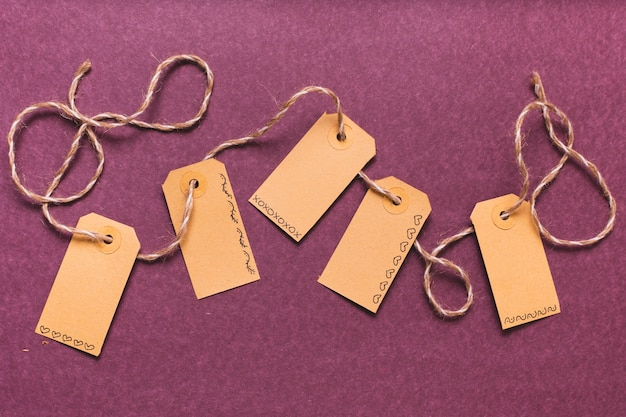 Comprehensive Guide to Logos, Labels, and Hang Tags for your Branding
Comprehensive Guide to Logos, Labels, and Hang Tags for your BrandingAs a custom clothing manufacturer with a few decades of experience in the fashion industry, we are aware that sometimes a mere beautiful design might not always receive the focus that it deserves.
Every element of your brand—logos, labels, and hangtags, to your website, e-commerce experience, trade show decor, advertising, and social media—affects how the public perceives your company. Your brand elements are not just cosmetics; they are "silent salespeople."
A successful branding strategy can provide a consistent, memorable brand identity that establishes your business in the market.
What Is Branding?
Branding is not a name, logo, or line of apparel—it's the overall impression of your company from the public. Everything, from ad copy to customer contact, is included in it. A solid brand identity serves as a guide for design decisions so that everything will look the same across all branding elements. A defined brand identity assists businesses in making quick and unified decisions, such as designing logos, choosing packaging, or creating advertising materials.
In this blog, we’ll cover three brand elements that have the biggest impact on your branding: logos, labels, and hang tags.
The Role of a Logo in Branding
Why Logos Matter
Logos are your brand's face, appearing on websites, labels, hang tags, marketing materials, and packaging. A well-designed logo raises brand awareness, builds trust with customers, and communicates your brand's personality. It's typically the first impression that customers have, so it's a crucial element of your brand identity.
Characteristics of an Effective Logo
The following are the qualities of an effective logo:
· Simplicity: Iconic logos like Nike's swoosh, Apple's apple, and Chanel's interlocking Cs have simple designs, hence easy to remember.
· Memorability: The logo has to be identifiable at a glance and cause the customers to immediately associate it with your business.
· Scalability: The logo should look good on small surfaces like business cards and also in larger displays like billboards.
· Relevance: Colors, shapes, and typography should be representative of the brand identity and target market.
· Timelessness: Avoid very trendy visuals that will go out of style within a few years, keeping your logo fresh for years.
Choosing the Right Colors
Color plays a crucial role in branding because it influences consumer psychology and purchasing behavior. Brands need to select colors that convey their identity and message. For example, black conveys luxury, while green suggests sustainability. Standardized color codes, such as Pantone, ensure color consistency across all materials, from logos to labels and hang tags.
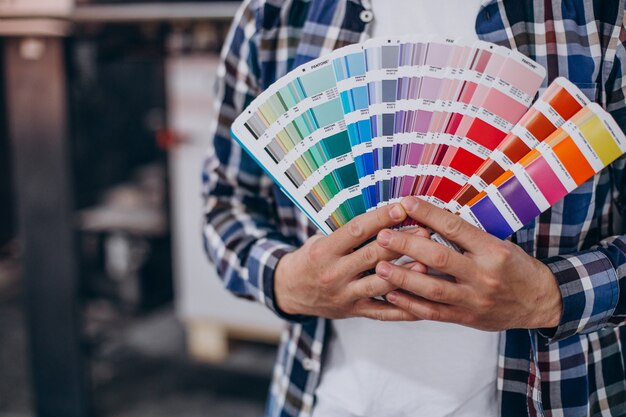
Labels: A Lasting Impression on Customers
Why Labels Matter
Labels are a lasting presence on your garment, reinforcing brand identity every time a customer wears your product. They provide vital information like brand name, size, care label, and fabric content. An effectively designed label can elevate the perception of your brand, whereas an ineffectively designed label can bring it down, and customers will end up cutting it off.
Printed Labels vs. Woven Labels
Labels are in two major forms:
· Printed Labels:
o More economical and easier to produce.
o Can fade or deteriorate over time, especially with frequent washing.
o Works well for minimalist or fast-fashion brands.
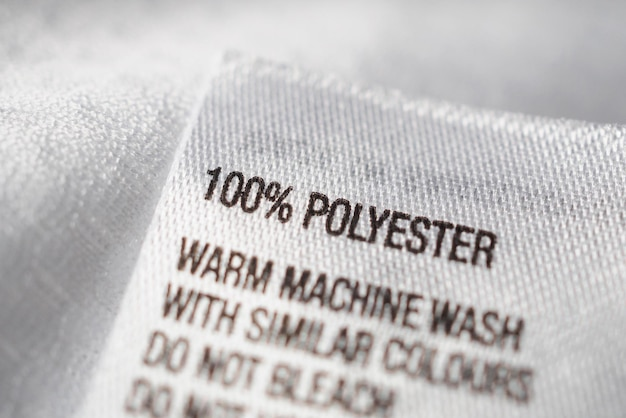
· Woven Labels:
o More durable and considered high-end, ideal for luxury and premium brands.
o Available in materials like cotton, silk, and satin, offering a premium feel.
o Suitable for intricate designs and long-lasting branding.
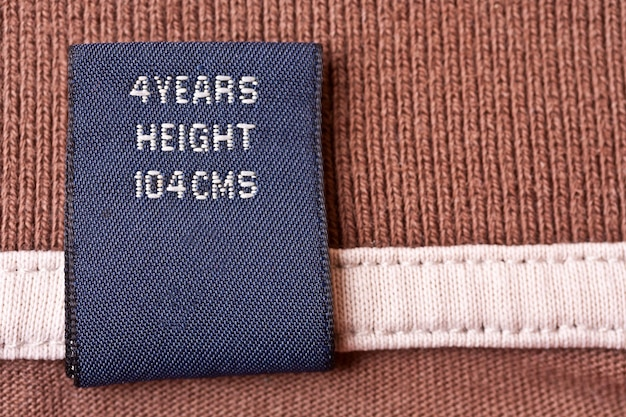
Size and Comfort Considerations
Labels should be less than 2 inches square so as not to be uncomfortable. Soft fabrics like satin or cotton are less likely to irritate the skin, so it is less likely that customers will cut them off. Comfort is paramount, especially for garments in contact with the skin, such as t-shirts or underwear.
Material Choices for Labels
The choice of the proper material for labels enhances comfort and brand reputation:
· Cotton, silk, satin: Soft and premium feel, ideal for high-end brands.
· Embossed leather: Ideal for rugged or premium brands, e.g., denim or outerwear.
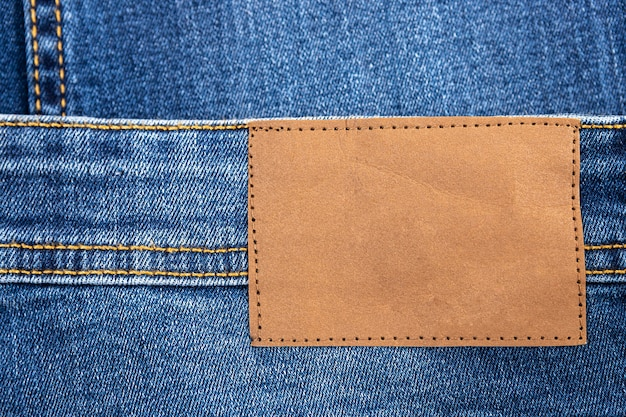
· Printed cotton tags: Suitable for eco-conscious brands, aligning with sustainability goals.
Hang Tags: Enhancing Brand Perception
Why Hang Tags Are Important
Unlike labels, hang tags are ripped off upon purchasing, but are a first impression of your brand identity. They offer more data such as prices, sustainability activities, and the selling proposition. A professionally executed hang tag delivers perceived brand worth and professionalism and is therefore crucial to your package strategy.
Hang Tag Design Considerations
When hanging tgs are created, take these into consideration:
· Colors: Should harmonize with the clothing line and remain consistent across seasons, according to your brand identity.
· Materials: Choose quality materials to ensure maximum durability and brand image.
· Typography and Logo: Ensure your logo and typography are legible and aesthetically appealing, reinforcing brand recognition.
· Content: Include required information like price, size, and brand history, but keep it concise and visually appealing.
Materials and Attachment Methods
Hang tags can be made of varied materials, offering varying appearances:
· Cardstock (flat or glossy surface): Versatile and cost-effective, suitable for most brands.
· Recycled paper: Best suited for eco-focused brands, where sustainability is prominent.
· Fabric hang tags: Unique and luxury, perfect for top-end brands and custom formal wear.
· Other materials: Metal, plastic, leather, or wood to create one-of-a-kind brand identity.
Attachment methods also impact perceived quality:
· Tagging gun: Most retail application, efficient with high-volume manufacturing.
· Color-matched string and safety pins: Adds a premium feel, ideal for high-end brands.
· Ribbon or cord: Enhances aesthetics and aligns with brand identity.
Hang Tag Types and Sizes
· Types:
o Card hang tags: Multi-purpose, customizable, and widely used.
o Door hangers: Made of cardstock, ideal for promotions.
o Fold-over hang tags: Can double as mini brochures, offering more space for information.
o Die-cut hang tags: Unique shapes that stand out, perfect for creative brands.
o Other materials: Metal, plastic, fabric, or leather for premium branding.
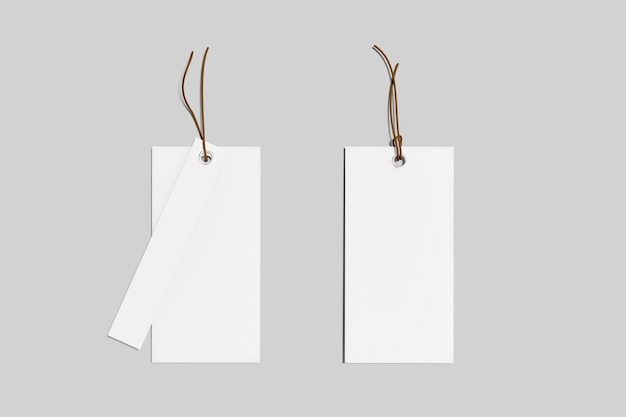
· Sizes:
o Small (1-2 inches): Suitable for watches, jewelry, or small accessories.
o Medium (2x3 or 3x4 inches): Ideal for clothing and apparel.
o Large (4x6 inches and above): Best for furniture or oversized items.
Sustainable and Eco-Friendly Considerations
Sustainability is becoming increasingly an issue for fashion branding. Hang tags and labels can contribute to eco-friendly actions:
· • Materials: Use sustainable options like recycled paper, organic cotton, or biodegradable materials to reduce environmental impact.
· • Avoid plastics: Plastic labels and hang tags are not eco-friendly and should be replaced with lighter, more sustainable alternatives.
· • Customization: Opt for biodegradable or compostable materials for custom designs, aligning with sustainability goals.
Production Planning: On-time Ordering Labels and Hang Tags
While samples may not require branding features, production orders do because they need to present professionally. For ensuring potential supply chain delays, businesses should pre-order hang tags and labels ahead of production. Advance planning ensures consistency in branding, avoids production errors at the last minute, and projects a professional look.
Practical Tips for Choosing and Designing Labels and Hang Tags
Label Design
· Choose Comfortable Materials: Choose comfortable fabrics like cotton or silk to prevent skin irritation and to enhance the wearing experience.
· Size Recommendations: Keep size label less than 2 inches to reduce discomfort.
Hang Tag Design
· Showcase Brand Story: Use hang tags to provide your brand narrative or encourage sustainability efforts, enhancing your brand reputation.
· Color and Material: Choose colors and materials in line with your brand image and utilize Pantone color codes for consistency.
Collaborating with Suppliers
· Communicate Your Needs: Involve suppliers early on to make clear your design requirements to supply quality and on-time delivery of custom hang tags and labels.
· Provide Design Sketches or Samples: Provide suppliers with your design sketches or samples to enable them to comprehend and portray your brand image.
Design Element Label Suggestions Hang Tag Suggestions Material Cotton, silk, or satin for comfort Cardstock, recycled paper, or fabric for added texture and luxury Size Smaller than 2 inches for comfort Small: 1-2 inches, Medium: 2x3 inches, Large: 4x6 inches for larger items Color Consistent with brand logo Coordinated with product range; use Pantone color codes Printing Printed for cost-effective options, woven for premium durability Offset or digital printing for high-quality finishes Attachment Sewn or glued for permanence Tagging guns, color-matched string, or safety pins for versatile attachment Conclusion
Every aspect—logo, label, and hang tag—is crucial to building a long-lasting impression that influences customer sentiment and solidifies brand image. An investment in superior quality branding materials fortifies customer loyalty and enhances your clothing brand recall. Understanding what differs, the parameters for designs, and fabrications for logos, labels, and hang tags will assist organizations to develop a properly designed and impactful brand image. Highlight sustainability, design consistency, and forward planning to make your brand stand out in the competitive fashion industry.
With Kutetailor, we help you create your brand and help you create a website or online store for your brand in an easy way, along with varied customizing and order management. We will analyze your needs and set up a customized business solution for you. Know more about Kutetailor and establish a stronger brand today.
MORE 2025-02-24 -
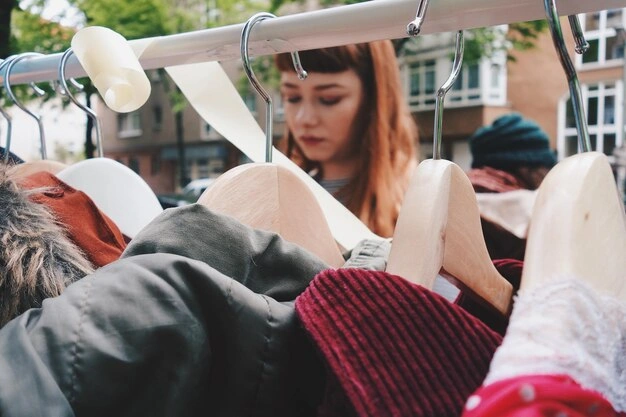 The Trends of Fashion Clothing Manufacturing 2025
The Trends of Fashion Clothing Manufacturing 2025The fashion industry is at a crossroads. The global economic uncertainty and geopolitical factors have caused growth rates to slow, yet the demand for high-quality, sustainable, and personalized fashion continues to rise. Consumers are increasingly looking for products that not only meet their unique tastes but also align with their values.
As a custom clothing manufacturer, Kutetailor has witnessed these shifts firsthand. We see an undeniable growth in the global demand for high-quality, sustainable, and personalized products. Looking ahead to 2025, there are key areas of focus in production methods, technological innovation, supply chains, and design trends that will shape the future of the fashion manufacturing industry.
1. Global Fashion Manufacturing and Design Trends
1.1 Sustainable and Eco-Friendly Practices
Sustainability is no longer a choice for fashion brands; it is a necessity. The push for eco-friendly materials and circular economy practices has accelerated. In response, manufacturers are embracing a range of sustainable practices that minimize environmental impact.
Recycled cotton, biodegradable nylon, and bio-based materials are becoming increasingly mainstream, along with many other eco-friendly materials. Besides saving waste, these materials conserve valuable natural resources. Many manufacturers now incorporate such sustainable materials into their processes in order to meet environmental and consumer needs.
The circular economy, which reduces waste through recycling and upcycling, is very important. For manufacturers, closed-loop systems in which garments are either produced from recycled materials or redesigned from existing ones avoid landfills of valuable resources. This approach enables zero-waste manufacturing and prolongs the life cycle of garments. More brands are partnering with manufacturers to make certain that their production lines support such sustainable goals.
Consumers, more than ever, are engaged in sustainability. They are demanding greater transparency in how products are made and are actively supporting brands that prioritize eco-friendly practices.
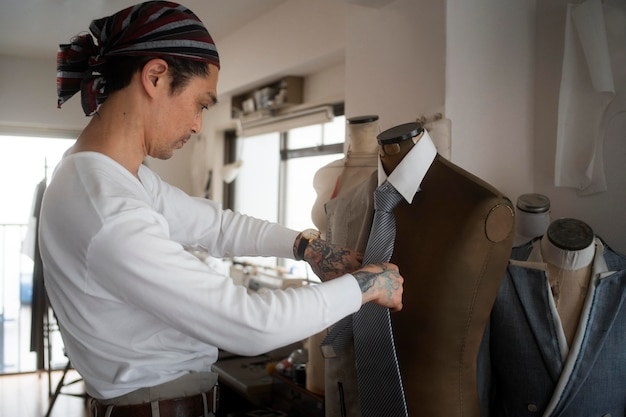
1.2 Ethical Labor and Transparency
Apart from sustainability, there is an increasing demand for ethical labor practices. Since the tragic Rana Plaza incident, the fashion industry has been compelled to reassess working conditions in garment factories. Fair wages and safe working conditions are now being demanded by consumers and activists, while governments and organizations have promoted legislation to make sure that manufacturers comply with ethical standards.
Brands are increasingly required to be open about their supply chains, to show where and how the garments are made. Blockchain technology and digital tracking systems make it easy to share that information with the consumer, developing trust between the brand and the customer. Against this backdrop, brands permitting transparency in the manufacturing process will emerge as more capable of prospering in today's market.
1.3 Technological Innovation and Digitalization
The future of fashion manufacturing is all about technology. From AI to automation, 3D printing-the way clothes will be designed, made, and sold is changing.
AI is being utilized to predict fashion trends, optimize production, and improve overall efficiency. It helps designers create more accurate collections that match consumer demand while minimizing overproduction. This technology can also help optimize the supply chain, reducing waste and making production more cost-effective.
Automation in tasks like cutting, sewing, and packaging has enhanced efficiency and minimized errors. It has reduced labor costs and sped up production times. With 3D printing, manufacturers can rapidly prototype designs and offer personalized clothing options. This technology enables quick modifications to designs, leading to fewer resources being wasted on rejected samples.
Another significant trend is the feature of virtual trying and making it personalized. Individuals seek apparel with a personal touch, and many brands have taken this forward through dimensions, fabric types, and designs modified-all through digital platforms of course. These will enable businesses to fulfill the evolving demand for customized, tailor-made apparels.
1.4 Economic and Market Shifts
The global fashion market is undergoing significant shifts. China's market is slowing down, but other Asian markets like Japan, Korea, and India are rising as new growth engines. (China is still in the lead, though.) In the U.S. and Europe, there are also shifts as high-net-worth individuals and the silver generation (50+ consumers) increase their fashion spend.
The e-commerce market is highly competitive, and brands are seeking ways to differentiate themselves through better customer experience, both online and offline. Retailers are adapting by blending digital channels with traditional in-store experiences to enhance customer engagement.
There is also a growing price sensitivity among consumers. While luxury brands continue to thrive, there is a growing trend toward discounts and resale markets. Brands must carefully navigate price points, communicating value to consumers and making sure they offer premium products for the right price.
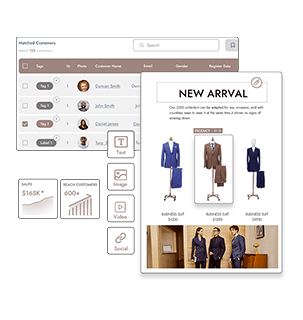
2. Fashion Design and Trend Directions for 2025
2.1 Major Fashion Trends for Spring/Summer 2025 in the USA
· Maximalism: Bold prints, layered textures, and oversized accessories encourage consumers to embrace creativity and individual expression.
· Feminine Silhouettes: Soft, flowing dresses, lace, and romantic details offer an elegant and graceful aesthetic.
· Suede: Luxurious, versatile fabrics for skirts, jackets, and accessories.
· Matching Sets: Coordinated outfits for a polished look.
· 70s Revival: Retro-inspired fashion, including paisley prints, flared jeans, and fringe jackets.
· Sheer Fabrics: Lightweight, ethereal garments for warmer months.
· Military-Inspired Fashion: Structured, practical garments with a stylish edge.
· Asymmetry: Unique, off-balance cuts for an avant-garde look.
· Prints: Psychedelic, florals, animal prints, and geometric patterns.
· Color Trends: Pastels, neon hues, earth tones, jewel tones, and classic black-and-white.
2.2 Key Manufacturing Concerns for 2025 in the U.S.
· Sustainability and Circular Economy: Focus on reducing waste and improving recycling processes.
· Ethical Labor Practices and Transparency: Ensuring fair wages and ethical working conditions.
· AI, Automation, and Data Use: Improving production efficiency and minimizing waste.
· Local and Small-Batch Production: Reducing carbon footprints and increasing customization.
3. Kutetailor’s Commitment to Sustainable Manufacturing
At Kutetailor, we are at the forefront of sustainable fashion manufacturing, offering fashion brands and businesses a one-stop Made-to-Measure (MTM) platform for creating tailor-made suits and apparel. Our commitment to sustainability drives us to prioritize transparent supply chains, ensuring that every garment we produce meets rigorous environmental standards without compromising on quality.
Our cutting-edge factory is among the pioneers in smart garment manufacturing, combining advanced technologies with traditional tailoring expertise. Through our full-customization approach, we enable brands to offer their customers the ability to self-design garments, ensuring that each piece is crafted to their exact specifications. The incorporation of intelligent tailoring and automated production processes allows us to produce high-quality, bespoke garments with swift delivery—typically within 7-10 days.
As part of our sustainable growth efforts, we have adopted practices that not only enhance efficiency but also contribute to a greener future. From the careful selection of durable fabrics to minimizing waste through automated processes, we are committed to creating fashion that’s both stylish and responsible.
Embrace the Change
The fashion industry is at an edge of a new wave, driven by sustainability, technological innovation, and personalization. As a visionary custom clothing manufacturer, Kutetailor is proud to offer global brands the opportunity to create high-quality, sustainable garments tailored to their consumers' most particular needs. We invite brands from the world over to join hands with us in embracing the future of fashion, where ethics and innovation go hand in hand.
FAQs
Q: What is the fashion industry forecast for 2025?
The fashion industry in 2025 is expected to focus on sustainability, technology, and personalization. We’ll see more use of eco-friendly materials and recycled fabrics, with AI and automation streamlining production. Brands will also offer more customized clothing to meet consumer demands for unique, tailored products.
Q: What is the future of the clothing industry?
The future of the clothing industry will be driven by sustainable practices, technology, and personalization. We can expect to see more custom-made fashion, ethical production, and digital innovations like virtual try-ons and 3D printing. Consumers will continue to push for transparency in sourcing and manufacturing.
Q: How can fashion brands stay competitive in the evolving market?
Brands can stay competitive by adopting new technologies, offering customization, and ensuring sustainable and ethical practices. Transparency in sourcing and quick, personalized service will also help brands build consumer trust.
MORE 2025-02-05 -
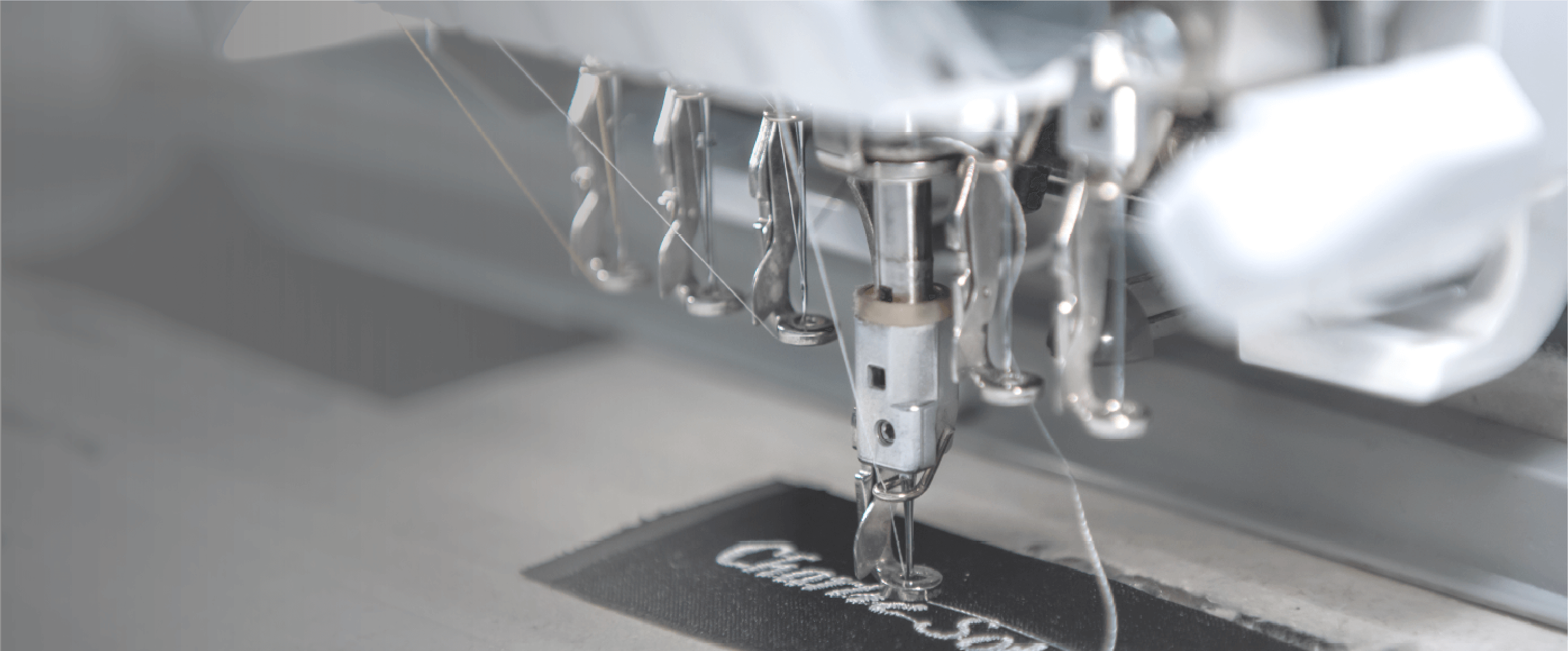 How to Find a Manufacturer for Clothing in 2025
How to Find a Manufacturer for Clothing in 2025The smell of freshly dyed fabric hung in the air as Maria, a Brooklyn-based designer, stared at the mismatched sleeve lengths on her prototype jacket. Her dream of launching an inclusive size range for curvy women was being sabotaged by production errors. Like 73% of emerging brands (2025 Fashion Tech Survey), she realized her success hinged on one critical decision: finding a clothing manufacturer who could translate sketches into flawless garments.
This isn't just about stitching fabric – it's about building partnerships in an industry where 43% of fashion startups fail within 18 months due to production mishaps. Let's navigate this complex terrain together.
Why Do You Need a Clothing Manufacturer?
Whether you're launching a luxury knitwear line or eco-friendly activewear, your choice of clothing manufacturers directly impacts:
•Brand reputation ㅤㅤ(Cited: 68% of consumers abandon brands after one quality issue – 2024 CGS Retail Report)
•Profit margins ㅤㅤ(Example: Producing organic cotton tees in Portugal costs 8.50/unitvs.8.50/unitvs.4.20 in India)
•Scalability ㅤㅤㅤ(Data: Manufacturers with ERP systems handle 40% larger orders without delays)
How to Choose the Right Clothing Manufacturer
1. Define Your Requirements
Start by clarifying your specific needs:
- Type of clothing – Are you producing casual wear, sportswear, or luxury fashion?
- Material and fabric preferences – Will you use organic cotton, polyester, or other sustainable materials?
- Order quantity – Do you need a small batch or large-scale production?
- Budget and lead time – Establish a clear financial plan and realistic production timeline.
2. Conduct Market Research
Understanding market trends can help refine your manufacturing strategy:
- Analyze competitors to see where they produce their clothing.
- Stay updated with fashion trends to align with consumer demands.
3. Find Clothing Manufacturers Through Different Channels
There are multiple ways to locate reliable clothing manufacturers:
• Online Directories and B2B Platforms – Websites like Alibaba, Thomasnet, Maker’s Row, and SaleHoo connect businesses with clothing manufacturers worldwide.
• Industry Trade Shows and Exhibitions – Attending apparel trade fairs allows you to network with potential suppliers and inspect their product quality firsthand.
• Social Media and Networking – Platforms like LinkedIn, Facebook groups, and Reddit forums can provide valuable recommendations and reviews from industry professionals.
• Independent website – Search for keywords such as custom clothing manufacturers and other related words on Google search engine to find independent websites. Independent websites (like Kutetailor) are directly connected with suppliers, making it easier to express your needs to clothing suppliers.
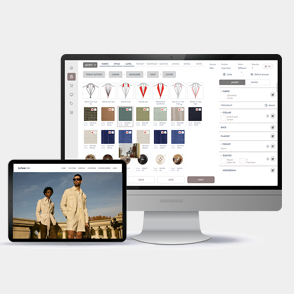
Domestic vs. Overseas Clothing Manufacturers
When choosing a clothing manufacturer, you must decide whether to work with domestic or overseas suppliers. Each option has its advantages and challenges:
Domestic Clothing Manufacturers
✅ Advantages:
- Faster communication and shipping times
- Higher quality control and ethical labor standards
- Easier to visit production facilities
❌ Challenges:
- Higher manufacturing costs
- Limited material and production options
Overseas Clothing Manufacturers (e.g., China, Bangladesh, Vietnam)
✅ Advantages:
- Lower production costs
- Access to specialized materials and technology
- Large-scale production capabilities
❌ Challenges:
- Longer shipping times
- Communication barriers
- Higher minimum order quantities (MOQs)
Evaluating a Clothing Manufacturer
Once you have shortlisted potential manufacturers, you must assess their credibility and quality:
1. Request Samples and Assess Quality
Before committing to a manufacturer, request product samples to evaluate:
- Fabric quality and durability
- Stitching and finishing details
- Sizing and fit accuracy
2. Check Client Reviews and Testimonials
Look for customer reviews on platforms like Google Reviews, Trustpilot, and industry forums to gauge the manufacturer’s reputation.
3. Verify Certifications and Compliance
Ensure that the manufacturer meets industry standards by checking for certifications such as:
- ISO 9001 – Quality management system
- OEKO-TEX – Safe and non-toxic textiles
- GOTS (Global Organic Textile Standard) – Sustainable and organic production
4. Factory Visits or Virtual Audits
If possible, visit the manufacturer’s facility to inspect working conditions, equipment, and production capabilities. Alternatively, request a video audit to assess their factory remotely.
5. Communication and Responsiveness
A manufacturer’s ability to communicate effectively is crucial. Consider:
- How quickly they respond to inquiries
- Their willingness to collaborate and make adjustments
- Transparency in pricing and lead times
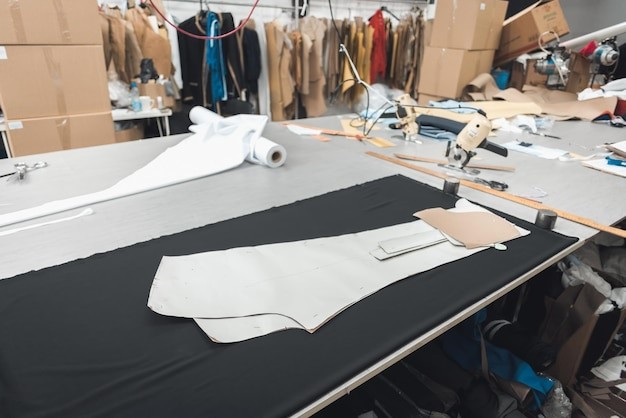
Building a Long-Term Relationship with Your Manufacturer
1. Start with a Small Batch Order
Before committing to a large production run, place a small order to test reliability and quality.
2. Establish Clear Contracts and Agreements
Outline all production terms, including:
- Pricing structure
- Delivery schedules
- Quality control expectations
3. Maintain Regular Communication
- Provide feedback to improve product quality.
- Schedule routine check-ins to address concerns.
- Foster a long-term partnership for consistent and efficient production.
Alternative Options: If You Don’t Want a Traditional Manufacturer
If working with a clothing manufacturer doesn’t suit your business model, consider these alternatives:
1. Dropshipping
With dropshipping, you sell clothing without holding inventory—your supplier handles production and shipping.
✅ Pros: Low startup costs, no inventory management
❌ Cons: Limited control over branding and quality2. Wholesale Suppliers
Buy ready-made clothing from wholesalers and sell under your brand.
✅ Pros: Quick inventory access, no production delays
❌ Cons: Less customization, lower profit margins3. Print-on-Demand (POD)
With POD services (e.g., Printful, Teespring), you can design custom clothing without upfront production costs.
✅ Pros: No inventory risk, flexible designs
❌ Cons: Higher per-unit cost, limited product varietyThe Future Is Being Sewn Now
When Maria finally found her match in a Chinese factory for her needs, she learned a lesson: The right manufacturers don’t just sew clothes—they sew confidence into every piece.
Choosing the right clothing manufacturer is an important step in building a successful apparel brand. By carefully defining your needs, researching potential suppliers, and thoroughly evaluating their quality, you can find a manufacturing partner that meets your business goals. Whether you choose domestic or overseas suppliers, or explore alternatives like dropshipping or print-on-demand, the key is to prioritize quality, reliability, and long-term partnerships.
With a strategic approach, you can secure a trusted manufacturing partner and focus on growing your fashion brand with confidence.
FAQs
How do I ensure product quality?
- Request product samples
- Conduct factory visits or virtual audits
- Work with a third-party quality control service
What are private label and white label manufacturing?
- Private label – The manufacturer produces custom designs with your branding.
- White label – The manufacturer provides generic products that you can rebrand and sell.
How long does it take to produce clothing?
Production time varies but typically takes 4-12 weeks, depending on the complexity of the design, order size, and manufacturer’s capacity.
MORE 2025-01-31 -
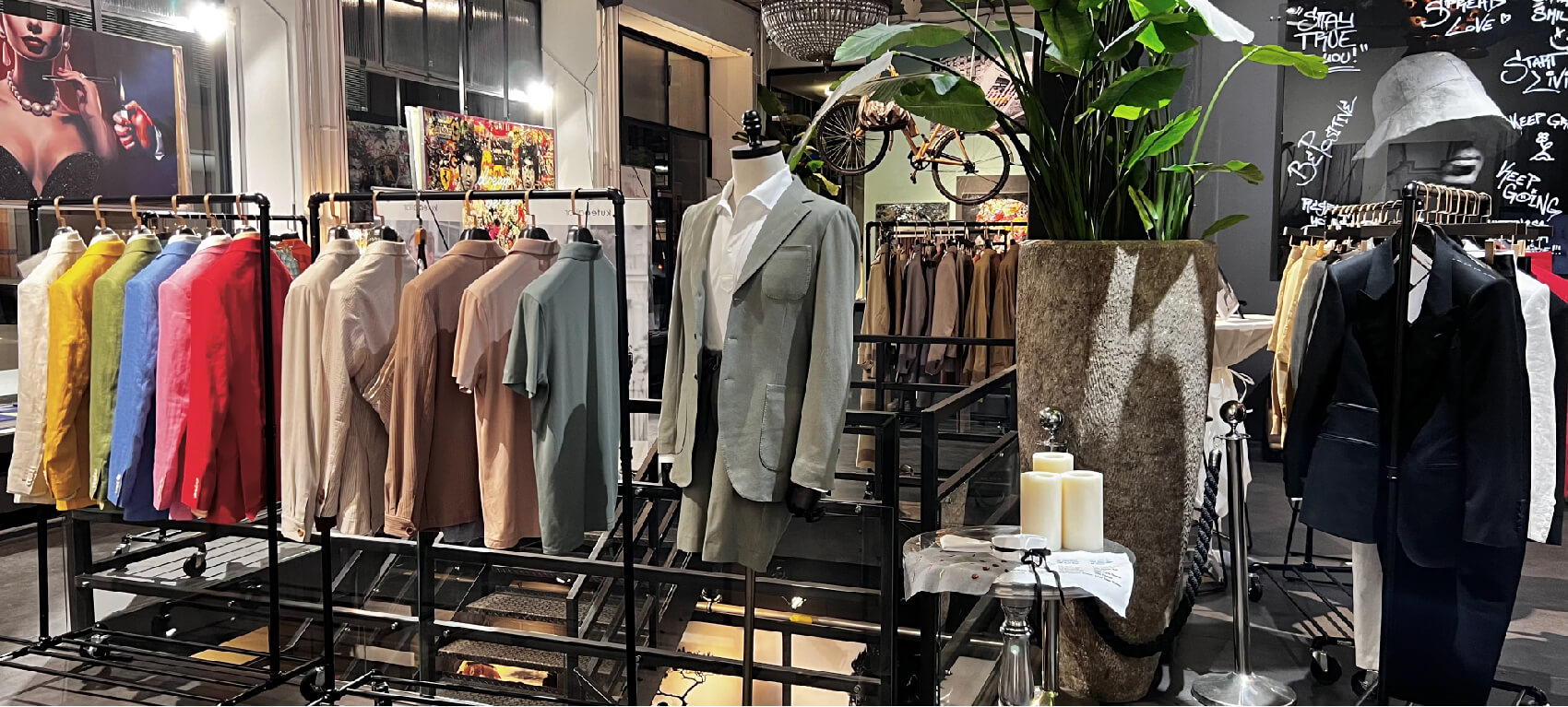 How to Start a Successful Clothing Brand in 2025: A Step-by-Step Guide
How to Start a Successful Clothing Brand in 2025: A Step-by-Step GuideThe global fashion industry is a vibrant, ever-evolving space where creativity meets commerce. Whether you’re an aspiring designer or an entrepreneur looking to disrupt the market, launching a clothing brand requires strategic planning, authenticity, and a deep understanding of your audience. This guide distills proven strategies to help you build a brand that stands out—without breaking the bank.
1. Identify Your Niche Through Targeted Market Research
Every iconic brand begins with a clear vision of its audience. Start by defining your ideal customer: Are they eco-conscious millennials seeking sustainable activewear? Urban professionals looking for minimalist office wear? Or parents prioritizing durable, playful kids’ clothing?
Key Steps:
- Analyze Trends: Use tools like Google Trends to spot rising demand for terms like “gender-neutral fashion” or “vegan leather accessories.”
- Study Competitors: Identify gaps in the market. For example, if most competitors focus on fast fashion, consider offering timeless, ethically made staples like custom formal wear for special occasions.
- Validate Demand: Launch a pre-order campaign or share design mockups on social media to gauge interest before investing in production.
Pro Tip:
Localized niches, such as yoga apparel tailored for solo female travelers or custom women's wear for tradeswomen, can help you carve out a loyal audience.2. Select a Business Model That Fits Your Vision
Your business model shapes everything from production to profit margins. Here’s how to choose wisely:
- Print-on-Demand (POD): Ideal for startups, POD platforms like Printify handle production and shipping, allowing you to focus on design and marketing. This model minimizes risk, as items are only made after a sale.
- Small-Batch Production: Partner with ethical custom clothing manufacturers for limited runs. This approach ensures quality control and appeals to shoppers valuing “Made Locally” craftsmanship.
- Handmade Collections: Perfect for artisans crafting unique, limited-edition pieces. While scalability is limited, this model fosters exclusivity and premium pricing.
Considerations:
- POD offers lower profit margins (~40%) but requires no upfront inventory costs.
- Bulk manufacturing demands higher investment but unlocks wholesale opportunities with boutiques or larger retailers.

3. Craft a Brand Identity That Resonates
Your brand is the soul of your business. It’s not just a logo—it’s the story, values, and visual language that connect with customers.
- Mission & Values: Define your “why.” For instance, a brand focused on sustainability might pledge to plant a tree for every purchase.
- Visual Identity: Choose colors, fonts, and imagery that reflect your ethos. Earthy tones and minimalist designs often appeal to eco-conscious buyers, while bold patterns attract streetwear enthusiasts.
- Storytelling: Share your journey authentically. Did you start sewing in a garage? Highlight it! Brands like Patagonia and TOMS have built cult followings through transparent, purpose-driven narratives.
Pro Tip:
Align collections with cultural moments or seasons. A summer “Ocean Rescue” line donating profits to marine conservation can drive engagement and sales.4. Prioritize Quality and Ethical Production
Quality is non-negotiable—especially in a market flooded with fast fashion.
- Sample Testing: Order prototypes to test fabric durability, print clarity, and fit. One brand avoided a disaster by discovering their “waterproof” jackets leaked after two washes.
- Ethical Sourcing: Partner with suppliers certified by organizations like Fair Trade or Global Organic Textile Standard (GOTS).
- Transparency: Share behind-the-scenes content. For example, showcase your factory’s fair wages or your use of deadstock fabric to reduce waste.
5. Launch Across Strategic Sales Channels
Diversify your reach to maximize visibility and sales:
- Online Marketplaces: Platforms like Etsy cater to handmade goods, while Shopify allows full customization for a branded storefront. Highlight niche categories like custom men's wear or custom women's wear to attract specific audiences.
- Social Commerce: Sell directly through Instagram Shops or TikTok’s “Shop Now” feature. Short videos showcasing your design process or customer testimonials can drive impulse buys.
- Offline Experiences: Host pop-up shops at local markets or collaborate with cafes for limited-edition drops. These events build community and create urgency.
SEO Optimization:
Incorporate keywords like “organic cotton hoodies”, “made to measure suits online” or “customizable workout gear” in product descriptions to improve search rankings.Kutetailor offers an all-in-one platform designed to elevate your online business. With customized options and flexible supply-chain management, the platform simplifies the ordering process for made-to-measure suits online and accessories. It also provides automated marketing tools that help brands effectively reach customers and optimize their strategies. Whether you're a small designer brand or a large-scale retailer, Kutetailor supports your growth with a seamless and efficient solution.

6. Market with Authenticity and Precision
Modern shoppers crave connection, not just transactions. A vegan apparel brand grew 200% in six months by collaborating with animal rights activists on Instagram Reels, linking each sale to donations for rescued animals.
- Micro-Influencers: Partner with nano-influencers (1K–10K followers) for affordable, relatable promotions. A yoga instructor sharing your eco-friendly leggings can resonate more than a celebrity endorsement.
- User-Generated Content (UGC): Encourage customers to post photos with a branded hashtag (e.g., #MySustainableStyle). Repost their content to build trust and community.
- Email Marketing: Use automated flows for abandoned cart reminders, post-purchase thank-yous, and exclusive early access to new collections.
7. Navigate Legal Requirements and Plan for Growth
Protect your brand and lay the groundwork for scaling:
- Legal Structure: Form an LLC to separate personal and business assets. This also boosts credibility with suppliers and customers.
- Trademarks: Secure your brand name, logo, and unique designs to prevent copycats.
- Sustainability Certifications: Pursue certifications like B Corp to attract conscious consumers and justify premium pricing.
Scaling Strategies:
- Expand globally using POD networks with international warehouses for faster, cheaper shipping.
- Introduce subscription boxes (e.g., quarterly deliveries of seasonal staples) to create recurring revenue.
To round off
The most successful clothing brands combine creativity with purpose. Be it starting off with print-on-demand tees or small-batch luxury knitwear, authenticity and quality are about meaningful connections with your audience.
For years, Kutetalior has helped many entrepreneurs and people who wanted to learn how to start a clothing line. And now we are here for you, too! By staying agile and true to your values, your brand can thrive in 2025’s competitive market—and beyond.

FAQs
I want to start a clothing brand. What should be my first step?
The first step is conducting targeted market research to define your niche and audience. Identify your ideal customers, analyze fashion trends using tools like Google Trends, and study competitors to find gaps in the market. Before investing in production, validate demand by launching pre-order campaigns or testing designs on social media.
How much does it cost to start a clothing line?
Startup costs vary depending on your business model:
- Print-on-Demand (POD) – As low as $500 (covering website setup and marketing).
- Small-Batch Production – $2,000 to $10,000 for inventory and branding.
- Full-Scale Manufacturing – $20,000+ for bulk production and professional marketing.
Factors like fabric choice, production scale, and marketing strategies will influence costs.
How do I name my clothing brand?
Choose a name that reflects your brand identity and is easy to remember. Consider:
- Brand Story – Does the name connect to your mission? (e.g., "EarthWear" for a sustainable brand)
- Availability – Check trademark databases and domain name availability.
- Simplicity & Uniqueness – Avoid overly complicated or generic names.
Can I put my own label on wholesale clothing?
Yes, this is called private labeling. Many wholesale suppliers offer this service, allowing you to add your logo and branding to their clothing. However, check the supplier’s terms, minimum order quantities (MOQs), and quality standards before committing.
Do I need a license to start a clothing brand?
Yes, depending on your location. Common requirements include:
- Business License – Register your business as an LLC or sole proprietorship.
- Trademark Protection – If you want exclusive rights to your brand name and logo.
- Seller’s Permit – Required in some regions for tax purposes.
Always check local regulations to ensure compliance.
How can I find a reliable manufacturer for my clothing line?
- Research platforms like Alibaba, Maker’s Row, or ThomasNet.
- Attend fashion trade shows to connect with suppliers.
- Request samples and test quality before signing contracts.
- Check for ethical certifications like Fair Trade or GOTS for sustainable production.
What is needed to start a fashion brand?
To start a fashion brand, you'll need to:
Define Your Brand: Identify your target audience, brand values, and unique selling proposition.
Create a Collection: Design your products, choose materials, and create prototypes.
Develop a Business Plan: Plan your pricing, production, and marketing strategies.
Source Suppliers & Manufacturers: Find reliable sources for materials and production.
Set Up an Online Store or Physical Shop: Choose a platform for sales and distribution.
Market Your Brand: Use social media, influencers, and campaigns to build visibility.
Handle Legal & Administrative Tasks: Register your business and trademark your brand.
MORE 2025-01-31 -
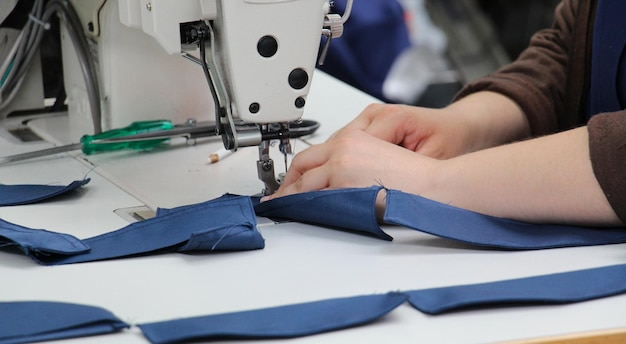 The Complete Guide to Custom Clothing Manufacturers: Everything You Need to Know
The Complete Guide to Custom Clothing Manufacturers: Everything You Need to KnowIn today's highly competitive fashion industry, more than ever, the need for custom clothing manufacturing has become critical. Manufacturers of custom clothes offer a special solution that will enable brands to differentiate themselves in the marketplace, as consumers demand more personalized and high-quality products. The key features of the process of manufacturing custom clothing will be discussed herein, which enables a business or an entrepreneur to understand the process, its benefits, and challenges while working with custom manufacturers.
What is Custom Clothing Manufacturing?
Custom clothing manufacturing generally refers to the process of producing clothes according to a customer's particular requirements. As opposed to mass production, which deals with standardized products, custom clothing is all about individualization. A custom manufacturer offers flexibility in new fashion lines, bespoke garments, or private label. It involves different stages, from design to pattern-making, the selection of fabrics, and stitching. It guarantees a quality, customized product that responds precisely to brand identity and consumer needs.
Services Offered by Custom Clothing Manufacturers
From design to production, custom-made clothing manufacturers often offer a range of services that can bring your fashion ideas into reality. These services might include:
· Sample Creation and Pattern-Making: Bespoke manufacturers help convert the initial design into a physical sample and pattern. They ensure the design fits into the intended aesthetic and fit.
· Fabric Selection: Based on the design requirement, manufacturers assist in choosing the best materials that will fit into both the aesthetic and functional needs.
· Full Package Production: Many custom manufacturers provide full-package services, right from trend research and design to production and logistics. This one-stop service has proved to be highly convenient, especially for those brands seeking one-stop solutions.
· Private Label Services: Besides this, the manufacturers provide private label service by manufacturing already designed garments and then allowing clients to put their own brand's labels, tags, and packing on them.
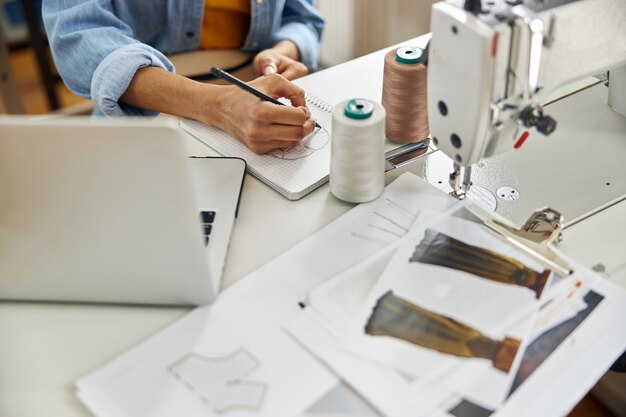
Types of Custom Clothing Manufacturers
Custom clothing manufacturers take on shapes and sizes in response to varied market needs. The common ones include:
· High-End Fashion Manufacturers: It deals with high-end clothes and pays more attention to minute details, finer fabrics, and impeccable finishing. Such a house is normally preferred by top-of-the-line brands that demand exclusivity and attention to detail.
· Streetwear and Fast Fashion Manufacturers: This category of manufacturers can produce fashionable clothes in the shortest time possible. They are meant for a fast-moving fashion industry where brands can keep up with the latest trends and satisfy consumer demand as soon as possible.
· Slow Fashion Manufacturers: Corresponding to sustainable fashion, the manufacturers of slow fashion are focusing on ethical production and high-quality garments with eco-friendly material. Such manufacturers are gaining more popularity due to the rising consciousness of consumers about sustainability.
· Sportswear Manufacturers: As athleisure and activewear continue to rise in popularity, manufacturers are adapting to produce high-performance garments that meet both style and functional needs.
The Geographical Advantage of Custom Clothing Manufacturers
While cities like New York and Milan have long been considered fashion hubs, many custom clothing manufacturers are now making a significant impact in other regions, offering global reach and competitive advantages. One such example is Kutetailor, a China-based custom clothing manufacturer. By operating from China, Kutetailor takes advantage of the country’s well-established textile industry, vast manufacturing infrastructure, and cost efficiencies to provide high-quality, tailor-made apparel for fashion brands worldwide.
China has long been recognized as a key player in the global apparel manufacturing industry, thanks to its access to raw materials, experienced labor force, and advanced production technologies. In particular, Kutetailor leverages cutting-edge technology in its smart garment factory, offering a unique combination of intelligent tailoring, automated production, and a full-customization approach. This allows for fast delivery times—typically within 7-10 days—without compromising on quality. With transparent supply chains and a commitment to sustainable growth, Kutetailor ensures that each garment produced aligns with high standards, meeting the specific needs of brands while contributing to environmentally conscious practices.
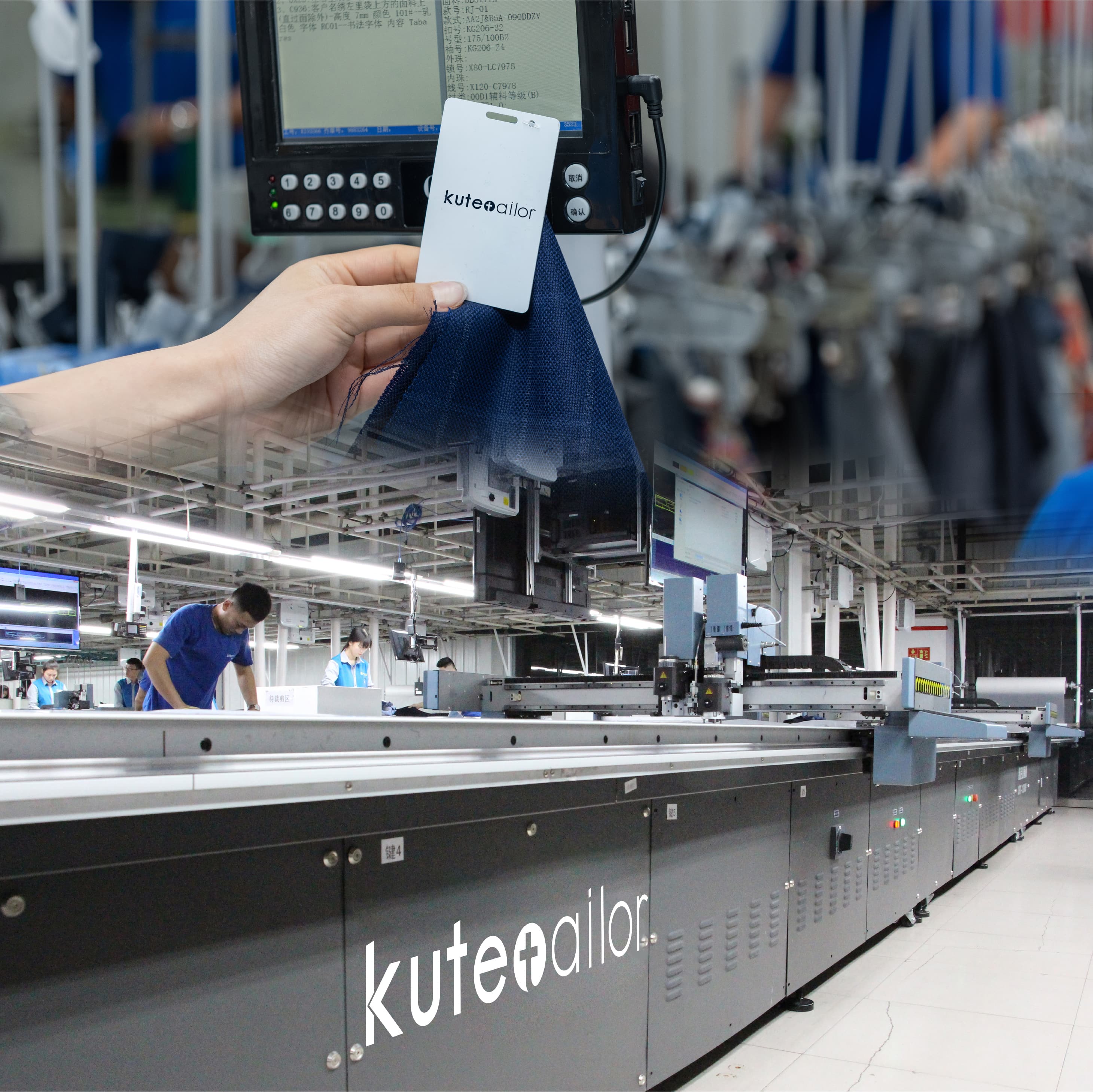
Minimum Order Quantities (MOQ) and Cost Considerations
One of the key advantages of working with custom clothing manufacturers is their flexibility in terms of Minimum Order Quantities (MOQ). Unlike mass-market manufacturers that require large bulk orders, custom manufacturers often cater to small businesses, startups, and brands that need smaller production runs. This makes it easier for entrepreneurs to test their designs before committing to larger production quantities.
However, custom manufacturing costs may greatly differ in the varying factors that include design complexities, qualities of materials used, and levels of customization. For this, brands should be closely working with their manufacturers over discussing transparent pricing structures, negotiating for bulk discounts, and making sure that production costs fit their budgets.
Ethical and Sustainable Practices
With the rising concern for sustainability in fashion, most bespoke clothing manufacturers today have shifted much focus to ethics in production methods. Sustainable manufacturing practices can save waste, conserve resources, and reduce carbon footprint. Key areas of sustainable manufacturing of custom clothes include:
· Eco-Friendly Materials: Manufacturers help brands choose fabrics made from organic, recycled, or low-impact materials that contribute to environmental conservation.
· Fair Labor Practices: Ethical manufacturers ensure safe working conditions and fair wages for workers throughout the production process.
· Customization to Reduce Waste: Custom manufacturing allows brands to avoid overproduction and excess inventory, minimizing waste typically associated with mass production.
For businesses looking to appeal to environmentally-conscious consumers, partnering with manufacturers that focus on sustainability is an effective strategy.
How to Choose the Right Custom Clothing Manufacturer
The right custom clothing manufacturer will play a significant role in determining the success of your brand. Following are some of the key factors that you should consider while selecting a manufacturer:
· Research and Online Platforms: Utilize platforms such as Maker’s Row or Alibaba to search for manufacturers that match your requirements. These platforms offer detailed manufacturer profiles, allowing you to compare services, pricing, and past work.
· Experience and Reputation: Look for manufacturers with a proven track record in producing high-quality garments. Check customer reviews, testimonials, and portfolios to gauge their capabilities.
· Communication and Transparency: Effective communication is vital throughout the production process. Ensure the manufacturer is responsive and provides clear, transparent updates on timelines, costs, and production status.
· Samples and Quality Control: Request samples to check the quality and fit before committing to full-scale production. Quality control should be a big concern to make sure the final product is as desired.

The Custom Clothing Manufacturing Process
The manufacturing process for custom clothing involves several key stages:
1. Design and Pattern-Making: The process begins with the creation of detailed designs and technical specifications. These are then transformed into patterns that serve as blueprints for the garments.
2. Sampling and Prototyping: Samples are produced based on the patterns and designs to ensure the product meets the desired quality and fit.
3. Production: Once the samples are approved, production begins. Fabrics are cut, sewn, and assembled according to the design specifications.
4. Quality Control: Throughout the production process, stringent quality control checks are conducted to ensure that every garment meets the required standards.
5. Delivery: After passing quality checks, the finished garments are packaged and delivered to the customer.
Challenges in Custom Clothing Manufacturing
While custom clothing manufacturing offers many benefits, it also presents certain challenges:
· Quality Control Issues: Variations in craftsmanship, fabric quality, and design details can lead to inconsistencies. Regular inspections and third-party audits can help mitigate these issues.
· Production Delays: Delays in sourcing materials, production bottlenecks, or issues with shipping can cause delays. Building buffer time into the production schedule can help reduce the impact of delays.
· Communication Barriers: Misunderstandings between the brand and manufacturer can lead to errors. Clear communication and detailed specifications are essential for a successful collaboration.
Final Say
Custom clothing manufacturers are crucial in helping a brand come up with unique high-quality clothes that stand out in the market. The right manufacturer can help ensure that ideas come to life exactly as planned with the capability for scaling up production when needed. With increased awareness among consumers, pushing them toward sustainability and ethics in what they purchase, working with manufacturers who focus on these aspects will help the brand connect with the conscious consumer of today. With the right partner, custom clothing manufacturing offers endless possibilities for brand differentiation and growth.
MORE 2025-01-31

